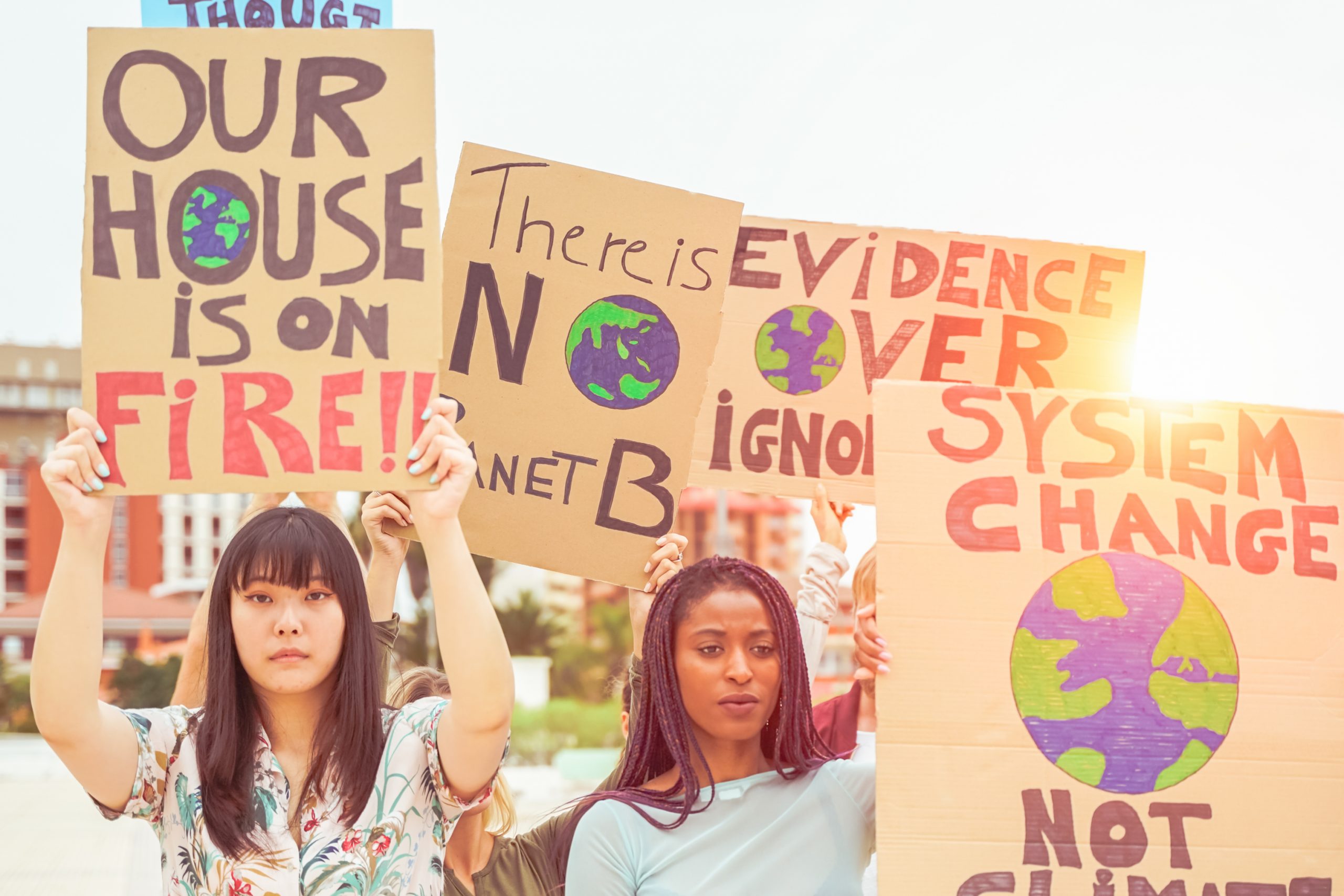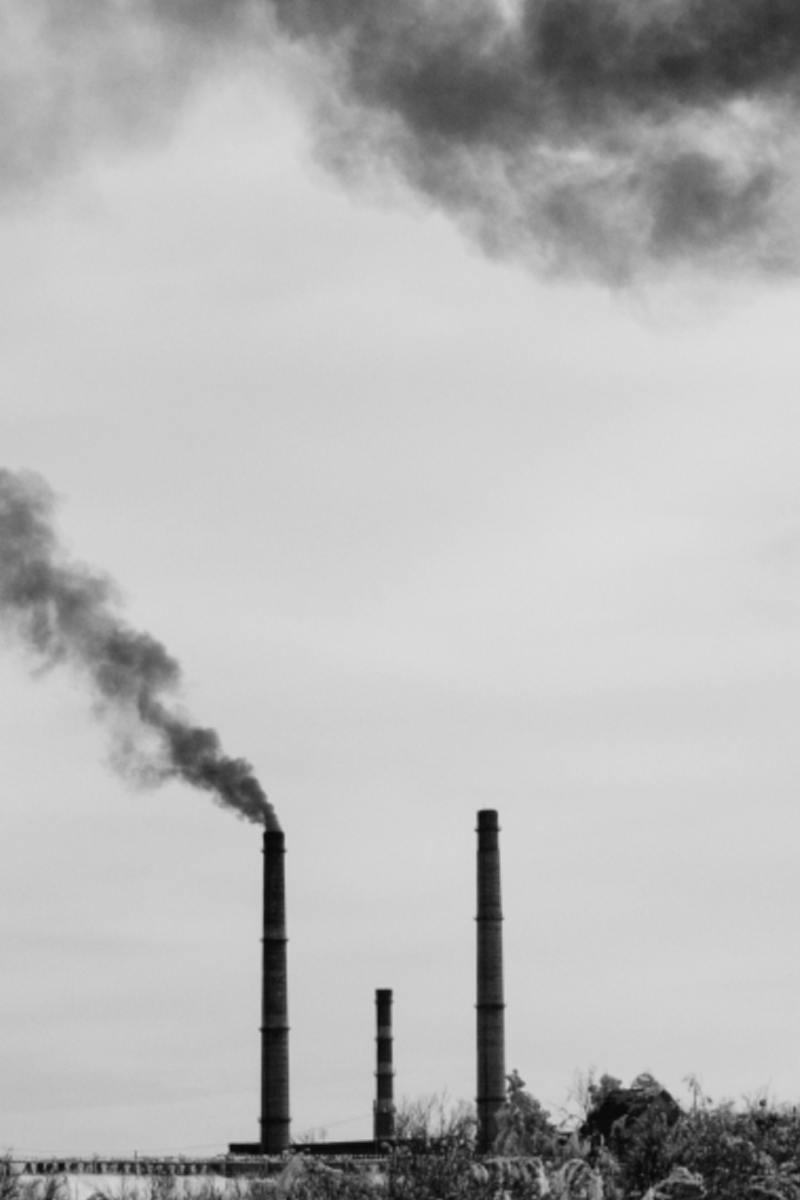About
The platform
The Vision for Equitable Climate Action (VECA) is a comprehensive vision for tackling the climate crisis drafted by members of the USCAN Equitable and Ambitious Climate Vision Action Team. Over nearly two years, more than 175 people from at least 106 USCAN member organizations participated in developing the VECA platform through a transparent, inclusive process. Not all USCAN members agree on every detail in the platform, but all support its urgency, scale, ambition and focus on justice. The platform will be updated annually in response to new developments or perspectives.
VECA PLATFORM
This document presents a vision of just and equitable policies with the goal of satisfying what climate science says is necessary to hold global average temperature rise to 1.5°C.

PROBLEM STATEMENT
THE SCIENCE
Humanity is facing an emergency climate crisis that poses an existential threat to human civilization and guarantees extreme suffering if we do not act immediately.[1] Excess greenhouse gases in the Earth’s atmosphere from the production, transportation, and combustion of fossil fuels and from unsustainable forestry, agricultural, and industrial practices are causing extreme and catastrophic changes to the planet’s climate system[2] and harming the communities that are host to the polluting facilities and processes. Eighteen of the 19 hottest years on record have occurred since 2001.[3] Rising temperatures are resulting in more intense storms, droughts, and ecosystem collapse. Extreme storms like Hurricanes Katrina, Sandy, Harvey, Maria, Irma, and Florence and Typhoons Haiyan, Mangkhut, and Yutu[4] are becoming more powerful, wetter, costlier, and more deadly in the United States and across the globe. Food and water security are under threat, with some areas facing up to a one-third decline in per capita crop production with 2°C of warming above pre-industrial temperatures.[5] According to the most recent report from the Intergovernmental Panel on Climate Change (IPCC), on our current trajectory, hundreds of millions of people are at risk for extreme suffering and early death. Up to a billion people could be forced from their homes in mass climate-driven migration by 2050.[6] Global warming already severely threatens many ecosystems and biodiversity generally. Threats to humans and wildlife alike grow significantly worse as warming approaches 1.5°C, with increasingly catastrophic consequences at higher levels of warming. Even under optimistic projections of business-as-usual greenhouse gas pollution, there is an unacceptably high 5% chance by 2100 of global heating to levels that pose “existential threats” to “a majority of [human] populations.”[7]

THE INJUSTICE
The injustice of climate change creates a moral obligation and call to action. Structural racism and economic injustice, including a history of colonialism and exploitation, have meant that those who are least responsible for the climate crisis and have the least resources to adapt are being hit first and worst: indigenous communities, communities of color, poor people, elderly people, women, young people, immigrants, people with disabilities, the global south, and others whom our current political and economic systems marginalize. Communities that have historically borne the brunt of public health and environmental harms from exploitative and toxic industries, as well as those whose energy burdens are disproportionately high, have been sacrificed for the whole. Extractive systems of mass production and mass consumption, in which we are all complicit, have been perpetuated by the willful deception and greed of a few profiteers in the fossil fuel industry, industrial agriculture, and other extractive industries. A culture of valuing profits over human lives has allowed falsities to flourish, such as the idea that the means towards our energy future must forgo climate justice. Intergenerational injustice has been the result of a culture of perpetual growth, and a result of the short-sighted greed and intentional deception of profiteers who knew for decades that their business model, if continued, would cause mass human suffering. Rather than change course or sound the alarm, they have doubled down and used the profits they earned from wrecking the earth to buy off politicians, lie to the public, and do everything in their power to maintain the status quo. We are nearly out of time, especially for those most vulnerable, who are already losing their lives and livelihoods. We must act immediately and at emergency speed. The window to meet this challenge with adequate solutions is closing—not just for those most vulnerable, but for us all.
THE ROADBLOCKS
Effective responses to the climate crisis have been hindered by the corrupting influence of fossil-fuel and extractive-industry money in politics, by a lack of political will and power to implement equitable and bold solutions, and by fractured organizing. Money from fossil fuel and other extractive industries drives U.S. politics, and as a result, climate denial reaches the highest levels of our government. All our political parties are culpable—either for outright denial, or for failure to put forward a program addressing the crisis with the speed and urgency it demands. We believe that solutions lie within the grassroots, in our communities, in our reconnecting with our interdependence on each other and the natural world, and in organizing. There is no more time for incrementalism, delay, or half-measures. Our movement cannot afford to be fractured. We must unite around common solutions, and we also must join forces with other movements that can help ensure a government that works to protect all people, not just a wealthy few.
rEFERENCES
[1] Climate Vulnerability Monitor: A Guide to the Cold Calculus of a Hot Planet. (2012). DARA. Retrieved from https://daraint.org/wp-content/uploads/2012/10/CVM2-Low.pdf
[2] Global warming of 1.5°C. (2018). Intergovernmental Panel on Climate Change. Retrieved from https://www.ipcc.ch/sr15/
[3] NASA Earth Observatory (2019) 2018 Was the Fourth Warmest Year, Continuing Long Warming Trend
[4] Kossin, J. P, Hall, T., Knutson, T., Kunkel, K. E., Trapp, R. J., Waliser, D. E., & Wehner, M. F. (2017). Extreme Storms. Climate Science Special Report: Fourth National Climate Assessment, Volume I. Retrieved from https://science2017.globalchange.gov/chapter/9/
Emanuel, K. (2017). Assessing the present and future probability of Hurricane Harvey’s rainfall. Proceedings of the National Academy of Sciences of the United States of America, 114(48). Retrieved from https://www.pnas.org/content/114/48/12681.full
Webster, P. J., Holland, G. J., Curry, J. A., & Chang, H. –R. (2005). Changes in Tropical Cyclone Number, Duration, and Intensity in a Warming Environment. Science, 309(5742). Retrieved from http://science.sciencemag.org/content/309/5742/1844.full
Holland, G., & Bruyère, C. L. (2013). Recent intense hurricanes response to global climate change. Climate Dynamics, 42(3-4). Retrieved from https://doi.org/10.1007/s00382-013-1713-0
Patricola, P. M., & Wehner, M. F. (2018). Anthropogenic influences on major tropical cyclone events. Nature, 563. Retrieved from https://www.nature.com/articles/s41586-018-0673-2
Wang, S-Y, S., Zhao, L., Yoon, J-H., Klotzbach. P, & Gillies, R. R. (2018). Quantitative attribution of climate effects on Hurricane Harvey’s extreme rainfall in Texas. Environmental Research Letters, 13(5). Retrieved from https://iopscience.iop.org/article/10.1088/1748-9326/aabb85/pdf
Risser, M. D., & Wehner, M. F. (2017). Attributable Human-Induced Changes in the Likelihood and Magnitude of the Observed Extreme Precipitation during Hurricane Harvey. American Geophysical Union. Retrieved from https://doi.org/10.1002/2017GL075888
[5] Hodges, J. (2018). Food Crops From Corn to Rice Are Seen at Risk From Warmer Climate. Bloomberg. Retrieved from https://www.bloomberg.com/news/articles/2018-10-08/food-crops-from-corn-to-rice-are-seen-at-risk-from-warmer-change
[6] Kamal, B. (2017). Climate Migrants Might Reach One Billion by 2050. reliefweb. Retrieved from https://reliefweb.int/report/world/climate-migrants-might-reach-one-billion-2050
[7] Xu, Y., Ramanathan, V. (2017). Well below 2°C: Mitigation strategies for avoiding dangerous to catastrophic climate changes. Proceedings of the National Academy of Sciences of the United States of America. Retrieved from https://www.pnas.org/content/early/2017/09/13/1618481114. The “optimistic” scenario referred to, termed “baseline-fast,” is the IPCC Representative Concentration Pathway 6.0. See IPCC AR5 WIII, Ch. 6, p. 427.
